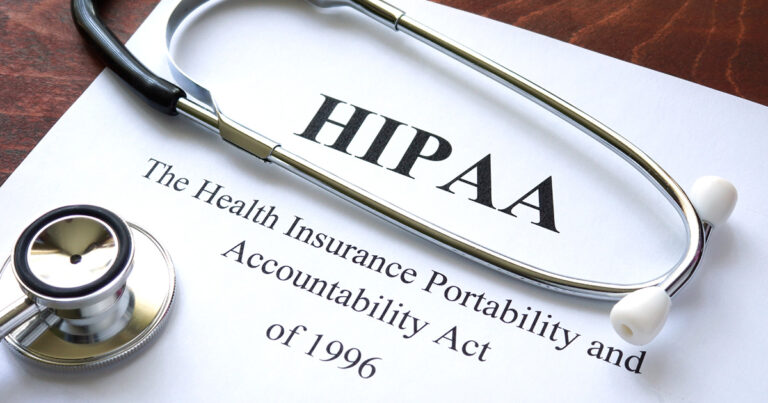What’s Missing From Your Medical Release Form?
When it comes to healthcare, providing and managing correct and thorough paperwork is critical to not only providing great patient care, but to remaining legally compliant. One type of documentation typically required in a healthcare service is a medical records release form.
A medical records release form is a document that allows you to share patient information with an outside party, such as an employer, an insurance company, a family member, another doctor or healthcare provider, or other third party.
A good rule of thumb is to use a medical release form in any case where you are asked to share medical records with an outside party.
According to the U.S. Department of Health and Human Services, the full definition of a medical release form is:
“…a detailed document that gives covered entities permission to use protected health information for specified purposes, which are generally other than treatment, payment, or health care operations, or to disclose protected health information to a third party specified by the individual.”
Medical release forms are essential for helping to protect both you and your patients. The form helps protect the patient’s privacy and right to release personal information as willing … and it protects your right to release information as consented.
Potential Missing Elements
When medical release forms are missing key details, it can result in a massive administrative headache for you, not to mention upsetting delays for the patient.
Patient signature
It seems simple, but with multiple documents to fill out and sign, a patient may miss the “signature section” at the bottom of the medical release form. A signature is critical to ensuring that the patient gives their legal consent to the document. Without it, you are under no obligation to comply with the patient’s right to release specific information to specific parties.
Clear expiration date
Medical release forms should specify an expiration date with a clause (For example, “This form is good 90 days from today’s date”). Without an expiration date, the medical release form may be rejected by an outside party for fear that the document has expired.
Disclaimer
Legal disclaimers provide detailed information about how the medical release form will be used, and the rights of the patient. The disclaimer should also provide copy stating that the patient has the right to revoke the form at any time.
A power of attorney
In some cases, a medical release form requires that a patient representative – such as a parent or legal guardian – sign the form. If such is the case, the medical release form should be accompanied by an additional form that gives such authorization to the patient representative.
Supporting documentation
In other cases, it may be necessary to provide additional documentation with the medical release form, such as a death certificate if the patient is deceased.
If any of the above elements are missing from a medical release form, the form may not be considered viable – and you may face administrative inconvenience, or worse – liability or violation of patient privacy.
Medical Release Forms: A Breakdown
The best way to avoid the legal or administrative headache of sending a medical release form with missing details is to perform a thorough assessment of your existing forms.
Your medical release form should include the following elements:
#1: Title: A simple title such as “Medical Records Release Form” should be sufficient to make the purpose and nature of the form clear and straightforward to your patients.
#2: Statement of purpose: At the top of the form should be a statement that indicates the patient’s assent to releasing otherwise confidential information.
#3: Patient name, date of birth and other relevant information: Have the patient clearly print their name, date of birth, address, SSN, and any other information that you believe may be necessary.
#4: Receiving party information: Ask the patient to clearly state who may have access to their medical information. Include fields for title, address, and any additional contact information that will clearly identify the receiving party.
#5: List of relevant medical information: Create a checklist of relevant medical information that the patient is consenting to release to the third party. These types of information may include lab reports, medication records, progress notes, and other otherwise confidential information about the patient’s medical history and diagnostic tests.
An alternative method of listing relevant types of medical information is to create a few simple categories: “All of my health information,” “My health information related to the following treatment or condition: ________,” or “My health information covering the period from ______(date) to _______ (date).”
In any case, the goal of this segment of the medical release form is to be precisely accurate. It will help protect you and the patient, and evade any problems that may arise in the future.
#6: Purpose of release: Include a field for the patient to specify why they are authorizing release of their medical records. This could include an insurance claim, a worker’s compensation claim, a request involving a school, or a specialist consultation.
#7: Disclaimer and expiration: Finally, as stated above, include a timeframe for the expiration of the medical release form, and a legal disclaimer.
Make sure your medical release form is accurate with our checklist.
Electronic Medical Release Forms to Ensure Quality and Accuracy
The potentially missing elements and framework listed above should give you a good idea of how to create a safe, efficient medical records release form.
But, there’s an additional step you can take to help ensure quality and effectiveness with your medical release forms.
If you’re currently using paper medical release forms, switching to electronic forms will streamline processes and save you time (and money) spent on shuffling paperwork.
Plus, when your medical records release form is electronic, you are more easily able to make necessary changes to the document.
Accessibility
Electronic forms can be found through a link on your website, making it easy for a patient to access your form, fill it out, sign it electronically, and instantly transfer the form to your database.
Accuracy
When forms are filled out online, any errors made on the part of the patient (or you) can be easily and instantly viewed and corrected.
Patient experience
Electronic forms ultimately make for a better patient experience. If a patient needs to sign a medical records release form and is unable to come into the office, they can simply access the form online, fill it out, and send it immediately to you.
Improved efficiency and processes.
Ultimately, electronic forms will save your practice time and money by streamlining a process that otherwise drains valuable time spent caring for patients.
IntakeQ can help you create and implement quality, effective electronic medical record release forms. You can use your existing medical record release form, which we can digitalize, or we’ll help you create one from scratch. Then, we provide a platform for you to transfer, fill out, and store your forms securely and safely, meeting HIPAA requirements.
Click here to see how we can start helping you with your medical records release forms today.



